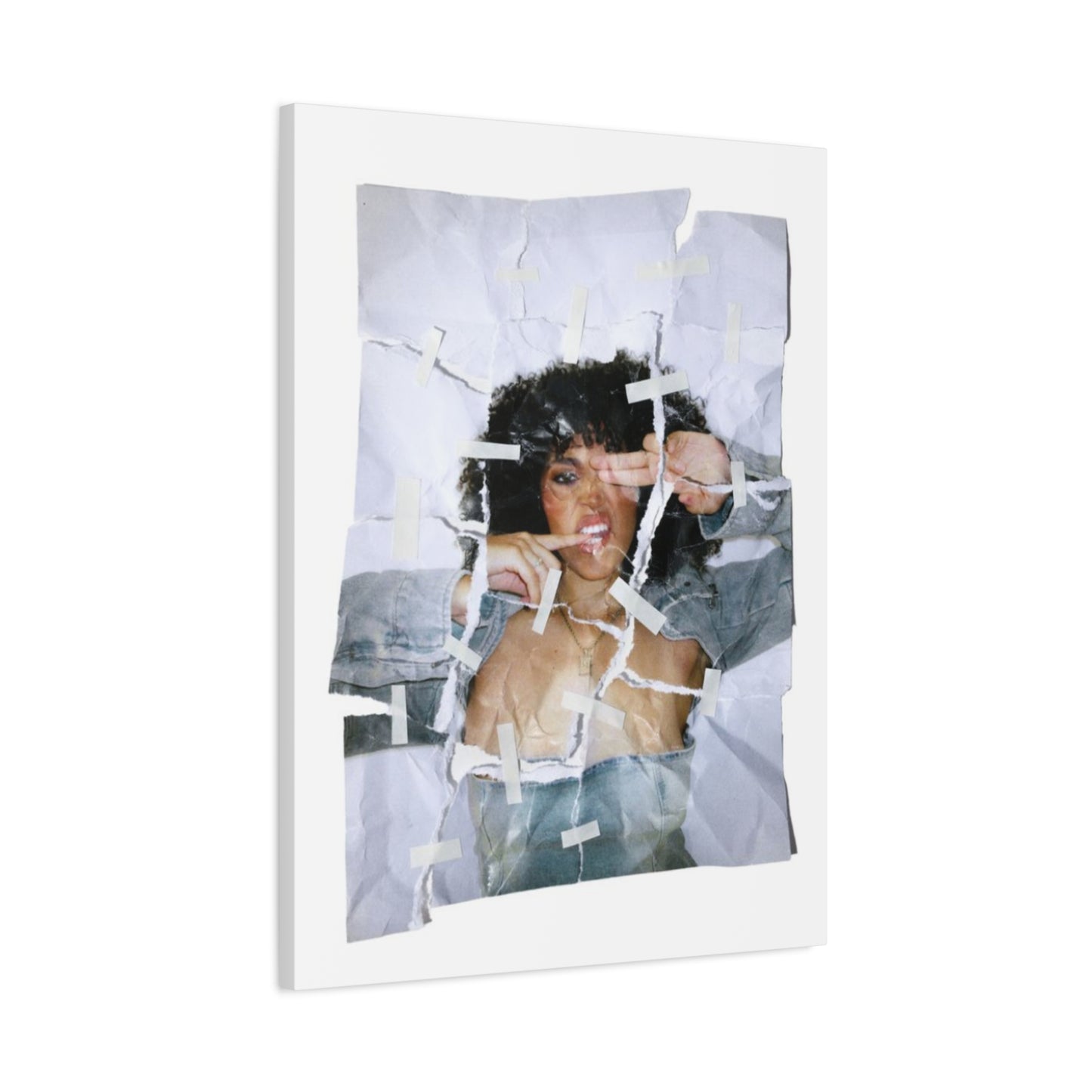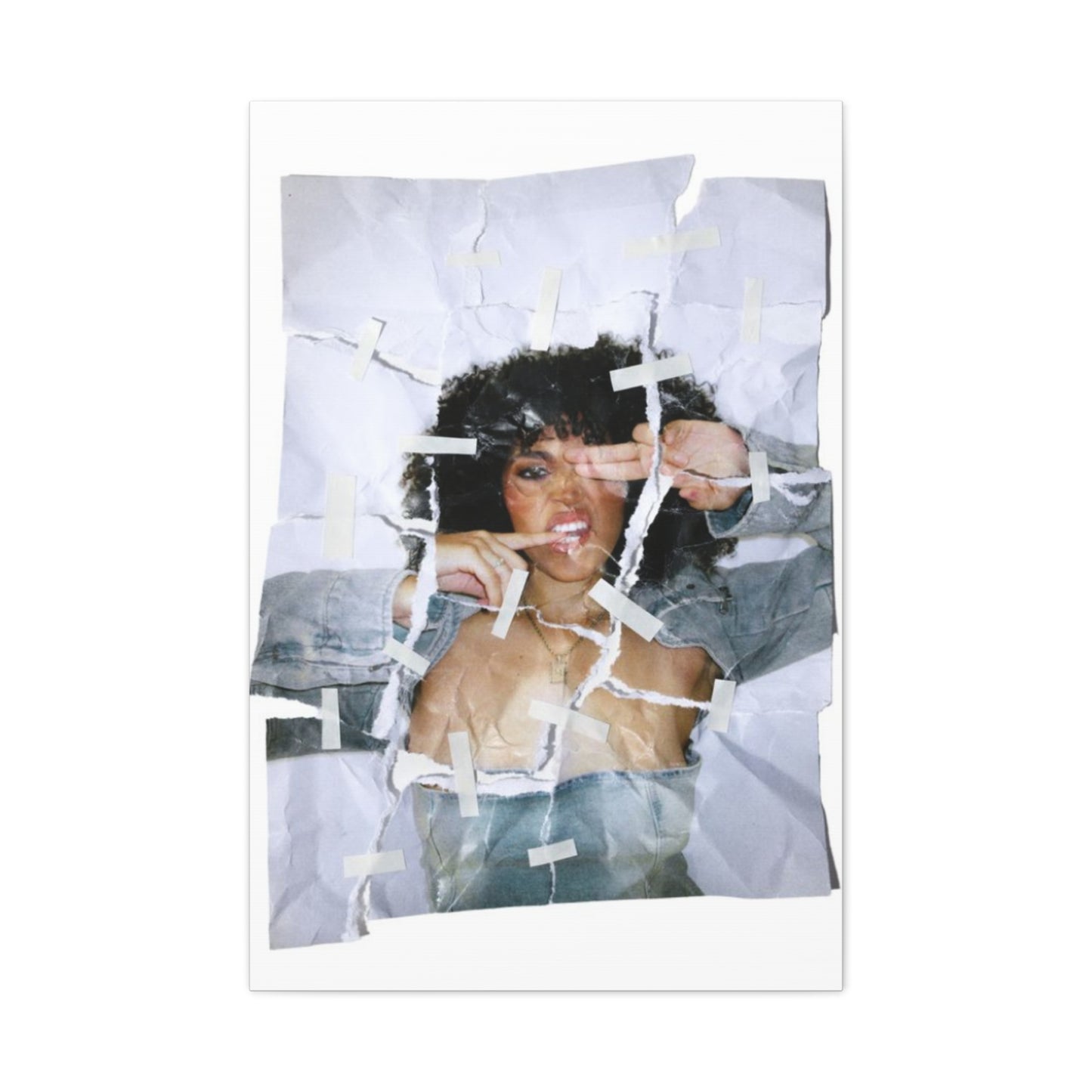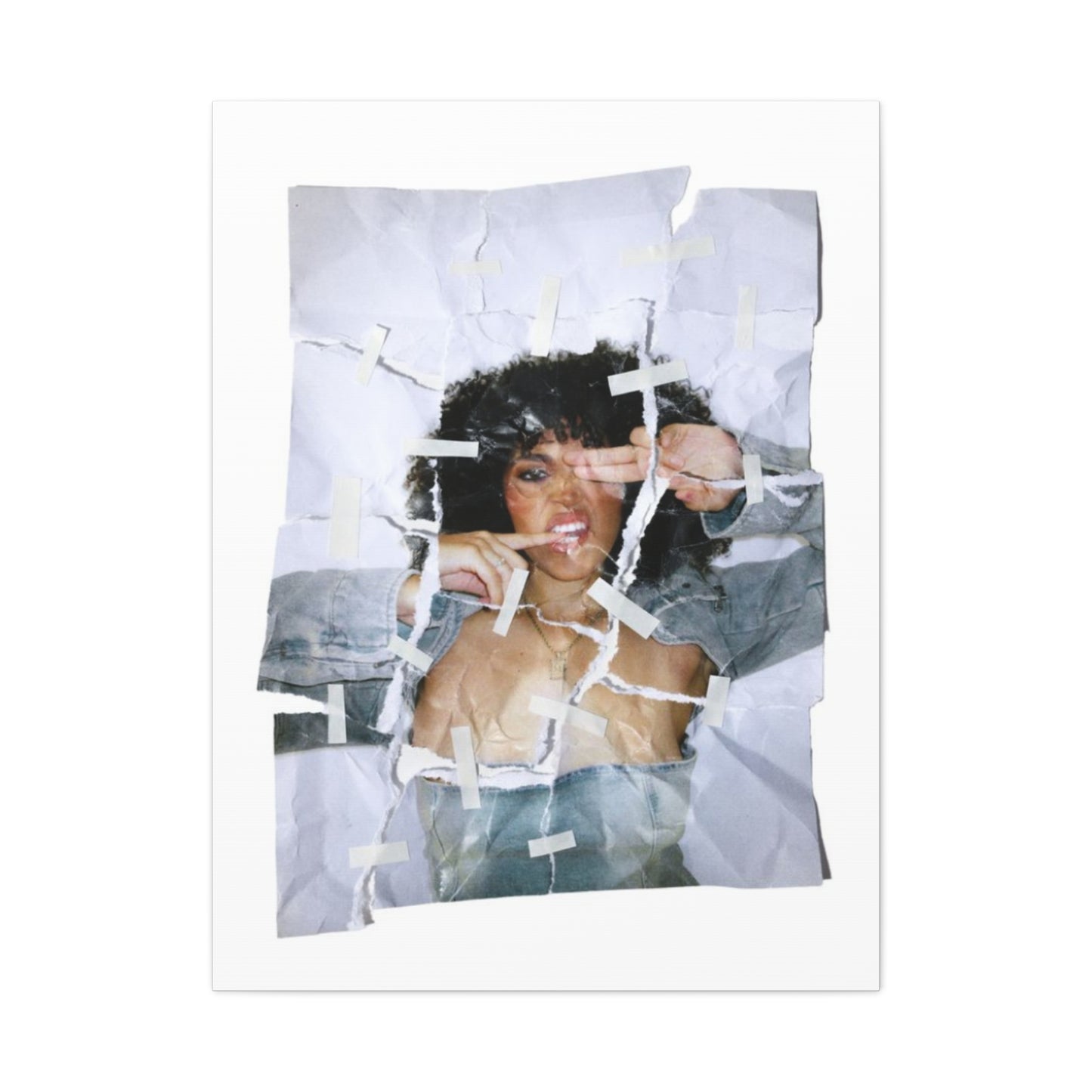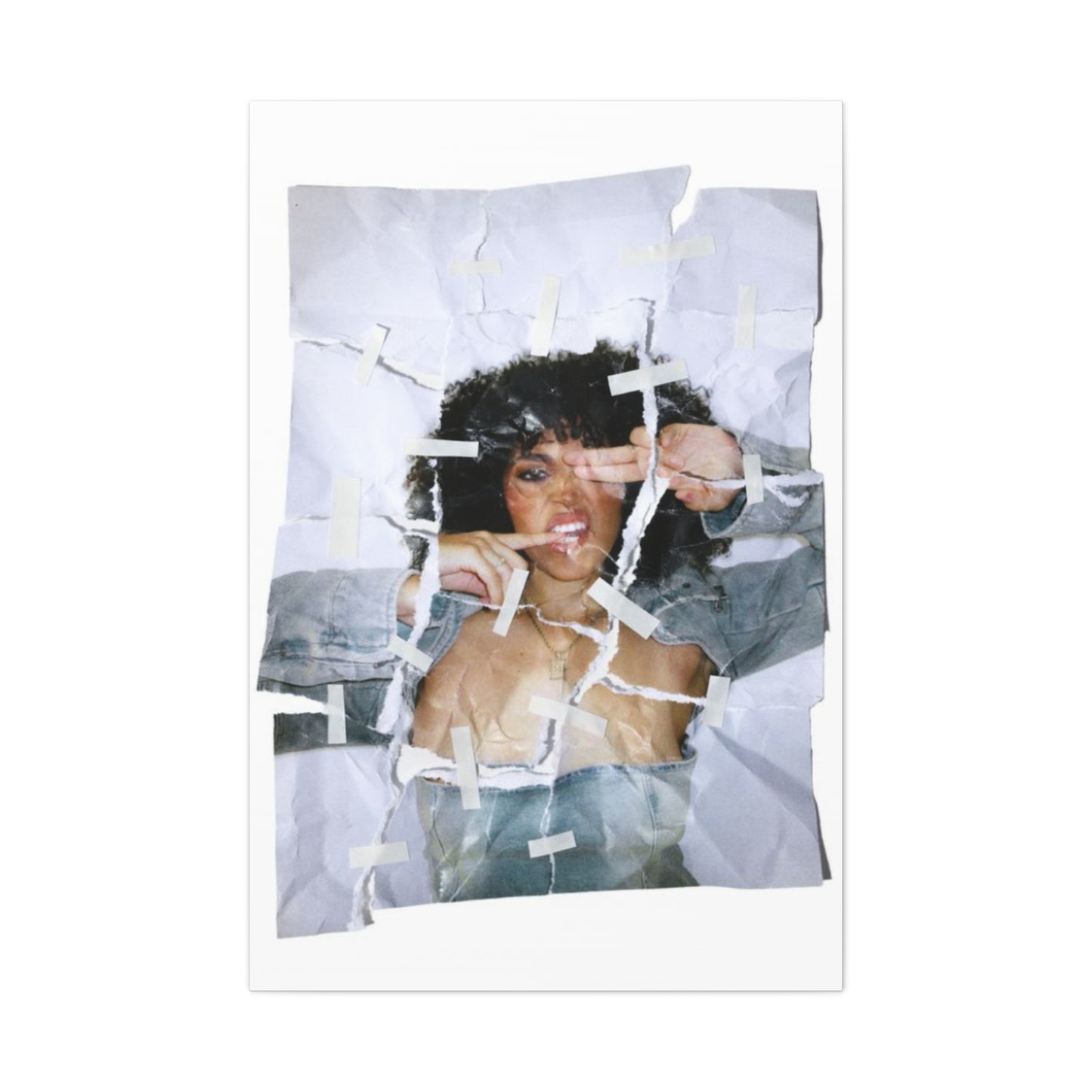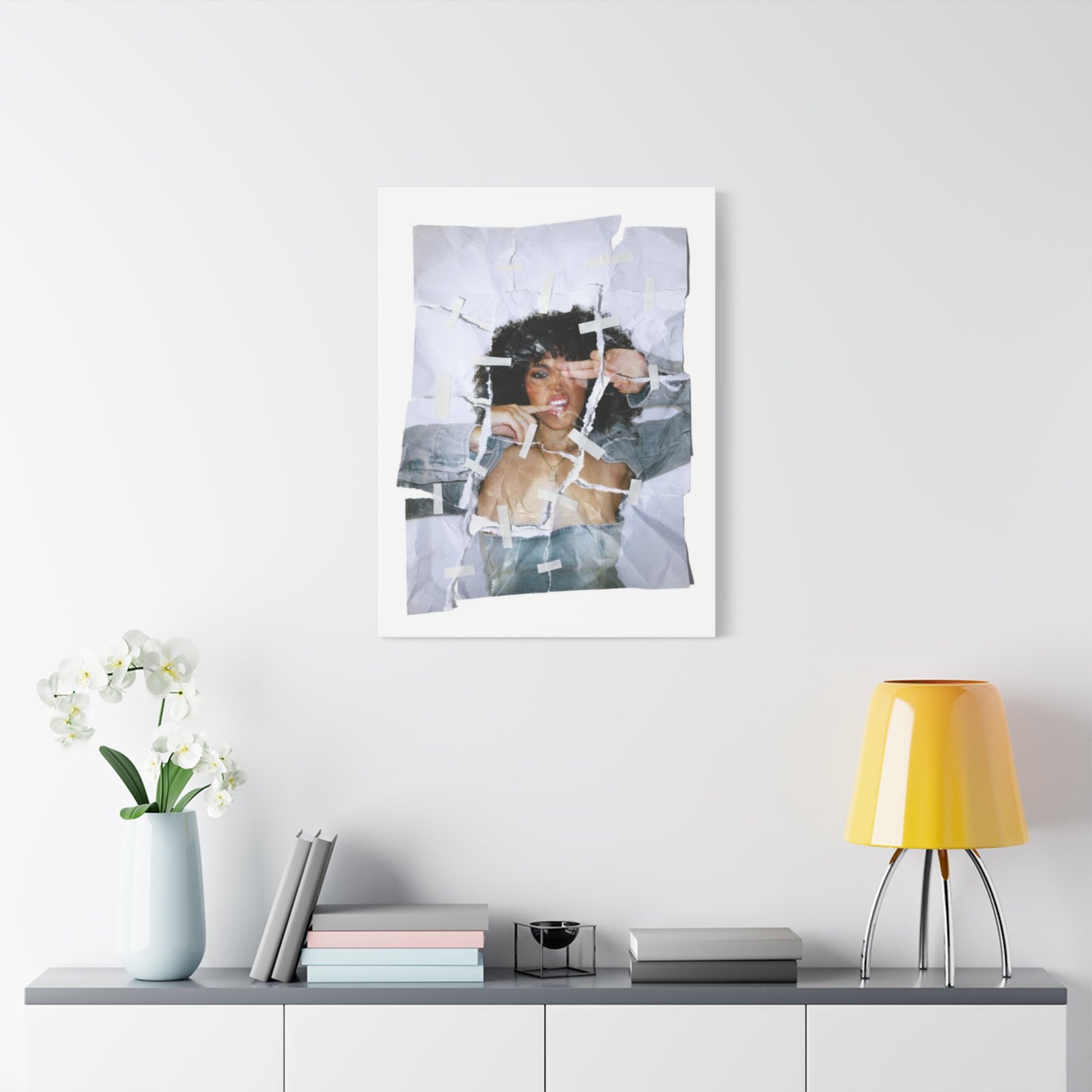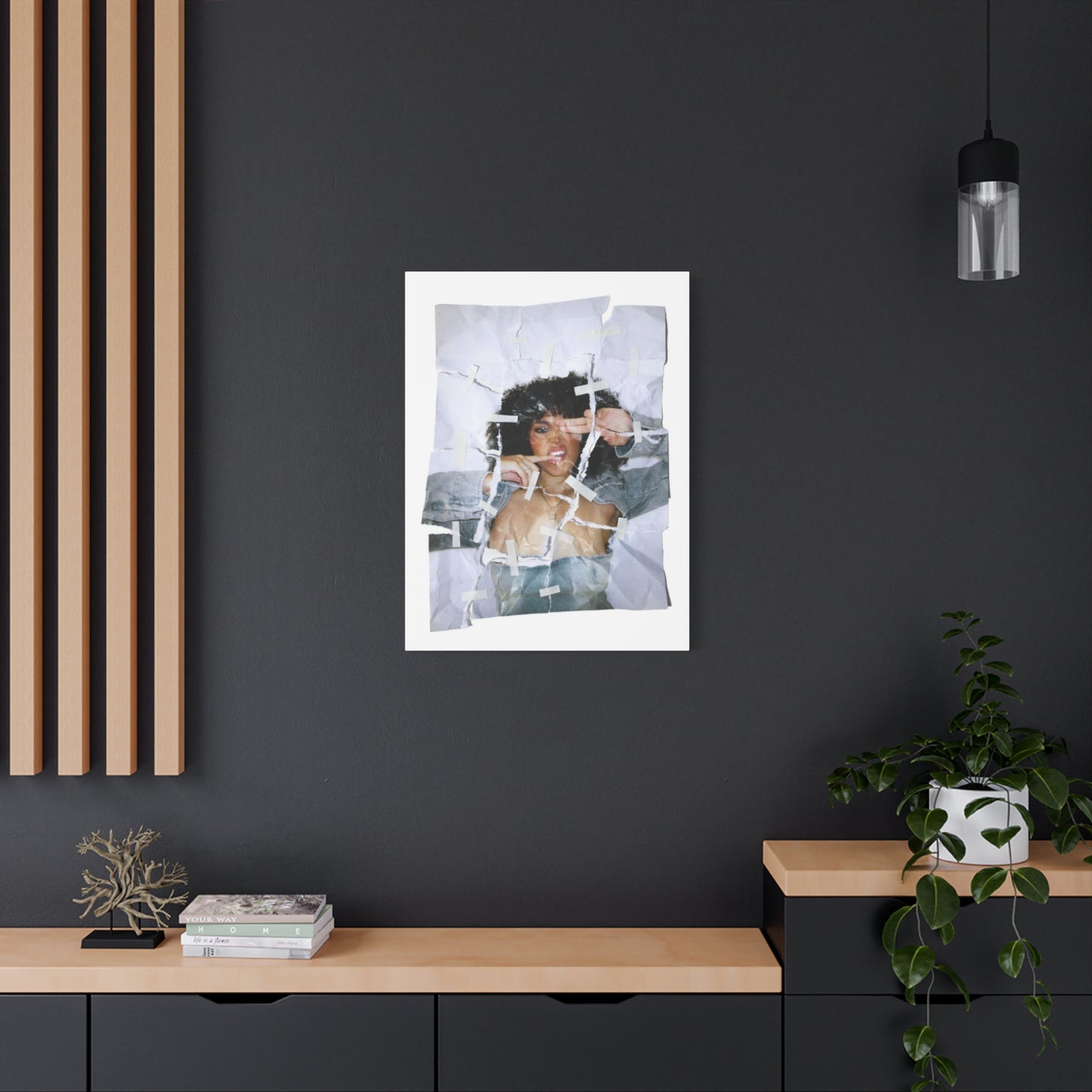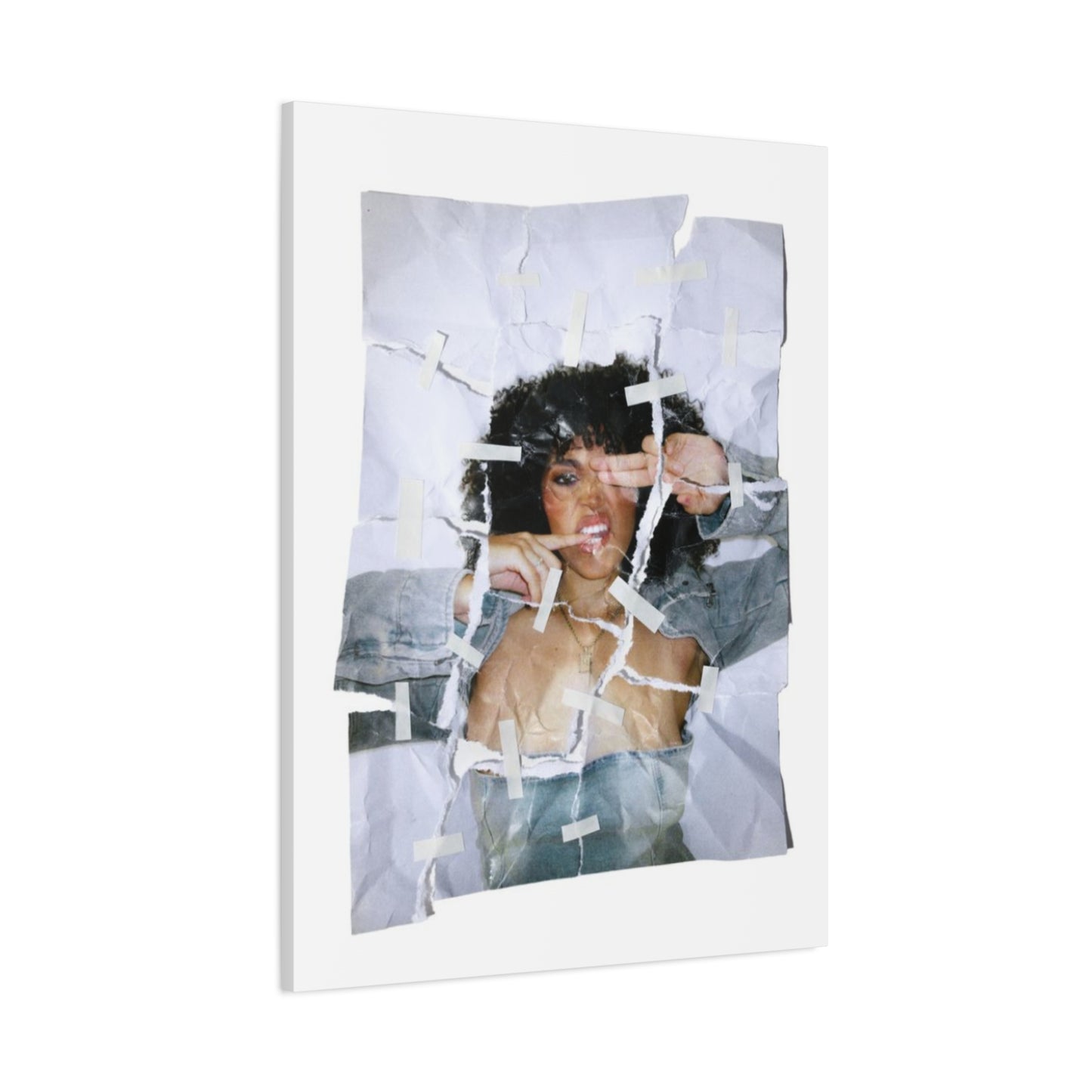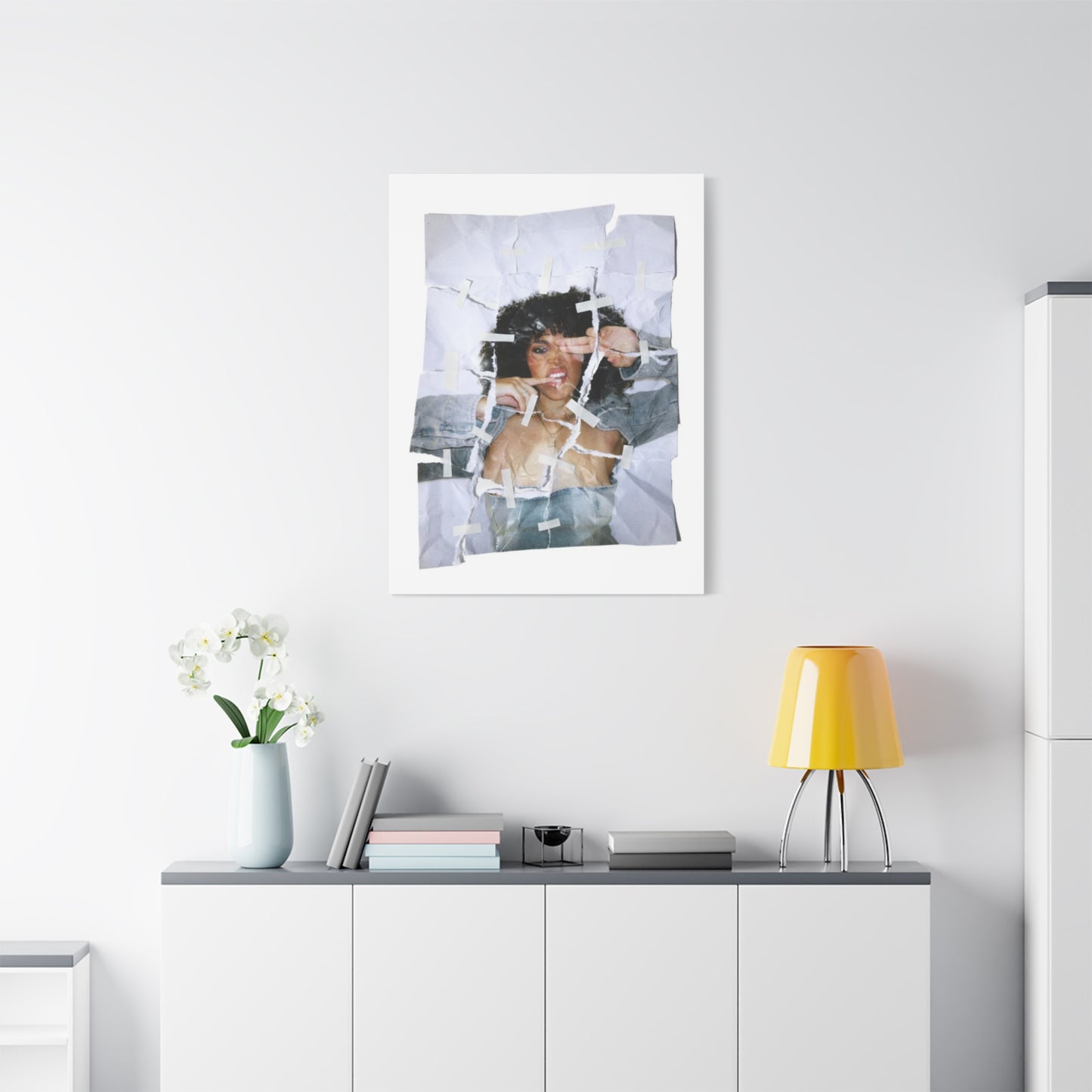Exploring the World of Women Painting Pieces and Mixed Media Wall Art: A Comprehensive Guide
The realm of artistic expression has witnessed a remarkable evolution over the centuries, with women artists making indelible marks through their innovative approaches to painting and mixed media creation. The convergence of traditional painting techniques with contemporary mixed media applications has given birth to an extraordinary genre that celebrates femininity, creativity, and boundless imagination. This comprehensive exploration delves into the multifaceted world of women painting pieces and mixed media wall art, examining the techniques, inspirations, cultural significance, and transformative power of this artistic movement.
The Evolution of Women Artists in Contemporary Painting
Throughout history, women have faced numerous barriers in the art world, often relegated to the shadows while their male counterparts received recognition and acclaim. However, the landscape has dramatically transformed, with women artists now leading innovative movements in painting and mixed media art. The journey from marginalization to prominence reflects broader societal changes and the relentless determination of female creators to claim their rightful place in artistic discourse.
The contemporary art scene celebrates women painters who challenge conventions and explore themes ranging from personal identity to universal human experiences. These artists employ diverse methodologies, combining classical painting traditions with experimental techniques that push boundaries. The rise of mixed media approaches has particularly empowered women artists to express complex narratives through layered compositions that incorporate various materials, textures, and dimensional elements.
Women painters today draw inspiration from their predecessors while forging entirely new paths. They reference historical female artists who persevered despite societal constraints, honoring their legacy while simultaneously breaking new ground. This intergenerational dialogue enriches the artistic conversation, creating works that resonate with both historical consciousness and contemporary relevance. The democratization of art through digital platforms has further amplified women's voices, allowing them to share their creations with global audiences and build supportive communities.
The significance of women painting pieces extends beyond aesthetic appreciation. These works serve as powerful statements about female agency, creativity, and perspective. They challenge stereotypes, question norms, and offer alternative visions of beauty, strength, and humanity. Through their art, women painters contribute to ongoing conversations about representation, equality, and the multifaceted nature of feminine experience.
Understanding Mixed Media Wall Art Techniques and Applications
Mixed media wall art represents an exciting frontier in contemporary artistic practice, offering limitless possibilities for creative expression. This approach combines various materials and techniques within a single composition, creating layered works that engage viewers on multiple sensory and intellectual levels. The methodology encompasses painting, collage, assemblage, printmaking, textile integration, and three-dimensional elements, resulting in artworks that transcend traditional categorizations.
The foundation of mixed media art often begins with a painted surface, which artists then enhance with additional materials. Acrylics provide a versatile base layer due to their quick drying time and compatibility with diverse media. Oil paints offer rich color saturation and blending capabilities, though they require different handling due to longer drying periods. Watercolors contribute delicate washes and translucent effects that contrast beautifully with heavier applications.
Beyond paint, mixed media artists incorporate papers of varying textures and colors, creating collaged elements that add visual interest and narrative depth. Vintage ephemera, photographs, book pages, and handmade papers become integral compositional components. Fabrics, lace, and textiles introduce tactile qualities and cultural references. Found objects, natural materials, metals, and recycled items contribute unexpected dimensions and conceptual layers.
The application techniques in mixed media art are equally diverse. Layering builds complexity, with artists applying and removing materials to create depth and history within the work. Transfers and image manipulation allow incorporation of photographic elements and text. Stamping and stenciling add pattern and repetition. Encaustic methods using heated wax create luminous surfaces. Resin applications produce glossy, protective finishes that enhance colors and unify disparate elements.
The beauty of mixed media approaches lies in their accessibility and adaptability. Artists can work intuitively, responding to materials and allowing the creative process to guide compositional decisions. Mistakes become opportunities for discovery, with unexpected combinations often yielding the most compelling results. This methodology particularly appeals to artists exploring themes of memory, identity, and transformation, as the layered nature of the work mirrors the complexity of human experience.
Color Theory and Palette Selection in Women's Artistic Expression
Color serves as a fundamental language in visual art, communicating emotions, establishing atmosphere, and guiding viewer experience. Women painters working in mixed media demonstrate sophisticated understanding of color relationships, employing palettes that range from harmonious and soothing to bold and confrontational. The strategic selection and application of color profoundly impacts how audiences perceive and interpret artworks.
Traditional color theory provides frameworks for understanding relationships between hues. The color wheel illustrates primary, secondary, and tertiary colors, revealing complementary pairs that create visual vibration and analogous groupings that produce harmony. Women artists manipulate these relationships to achieve specific effects, whether seeking visual balance or intentional discord that reflects thematic content.
Many contemporary women painters favor palettes that challenge conventional associations between femininity and soft pastels. While some embrace traditionally feminine colors, subverting expectations through unexpected applications, others employ bold, saturated hues that command attention and assert presence. Deep jewel tones, earthy ochres, dramatic blacks, and vibrant primaries appear prominently in works that refuse demure categorization.
The psychological impact of color choices cannot be understated. Warm tones evoke energy, passion, and vitality, while cool hues suggest calm, introspection, and distance. Artists manipulate these associations to create emotional resonance, guiding viewers through intended experiences. The juxtaposition of warm and cool creates dynamic tension, while monochromatic schemes emphasize form and texture over chromatic variation.
In mixed media contexts, color considerations extend beyond paint to encompass all incorporated materials. Artists consider how different elements interact chromatically, ensuring cohesion across diverse media. A vintage photograph's sepia tones might echo warm glazes in painted areas. Fabric patterns could complement or contrast with background colors. Metallic accents might highlight specific compositional elements or create visual pathways through the work.
Cultural and personal associations also inform color choices. Women artists from diverse backgrounds bring unique perspectives shaped by their cultural contexts, where colors carry specific meanings and emotional resonances. These culturally informed palettes enrich the global artistic conversation, introducing audiences to color relationships and symbolism beyond Western traditions. Personal experiences with color, whether rooted in childhood memories or significant life events, infuse artworks with intimate authenticity.
Compositional Strategies for Creating Compelling Wall Art
Composition forms the structural foundation of successful visual art, organizing elements within the picture plane to guide viewer attention and create visual interest. Women working in painting and mixed media employ diverse compositional strategies, balancing traditional principles with experimental approaches that challenge conventional notions of pictorial organization.
The rule of thirds provides a basic framework, dividing the canvas into nine equal sections and placing focal points at intersection points. This creates naturally pleasing arrangements that avoid static centrality. However, many contemporary artists intentionally violate this principle, centering subjects or employing asymmetrical arrangements that create dynamic tension and reflect thematic concerns about balance and instability.
Leading lines direct viewer gaze through compositions, creating movement and establishing visual hierarchies. These may be explicit, such as painted lines or incorporated linear elements, or implicit, formed by alignments of shapes, colors, or values. Women artists skillfully employ leading lines to control how audiences navigate their works, ensuring important elements receive attention while maintaining overall compositional flow.
Balance in composition can be symmetrical, creating formal harmony through mirrored elements, or asymmetrical, achieving equilibrium through careful distribution of visual weight. Many mixed media pieces employ asymmetrical balance, with heavier elements offset by negative space or lighter counterweights. This approach feels more organic and contemporary than rigid symmetry, allowing for spontaneity and visual surprise.
Layering creates depth in both literal and illusionistic senses. Physically layered mixed media elements cast shadows and create dimensional space. Illusionistic depth emerges through value contrasts, atmospheric perspective, and overlapping forms. Women artists manipulate these techniques to create works that oscillate between flatness and recession, challenging viewers to reconcile conflicting spatial cues.
Negative space, the areas surrounding and between subjects, plays an equally important role as positive elements. Thoughtful use of negative space provides visual rest, emphasizes focal points, and contributes to overall composition. Many contemporary women painters embrace negative space as active compositional component rather than mere background, treating it with equal consideration.
Texture Creation and Surface Manipulation in Mixed Media
Texture adds a crucial dimension to mixed media wall art, transforming flat surfaces into tactile landscapes that invite closer inspection. Women artists employ numerous techniques to create varied surfaces, from subtle variations that catch light to dramatic relief that casts shadows. This physical dimension enhances visual interest and provides sensory engagement beyond purely optical experience.
Paint application methods significantly impact texture. Thick impasto applications create three-dimensional brushstrokes that record gestural energy. Palette knife techniques produce flat planes and sharp edges. Dry brushing yields scratchy, broken color. Glazing builds transparent layers that create optical depth. Artists combine these approaches within single works, creating textural variety that maintains viewer interest across the composition.
Additive techniques incorporate materials that physically alter surface topology. Modeling paste creates dimensional elements that can be carved, stamped, or textured while wet. Gel mediums mixed with paint increase body and transparency. Sawdust, sand, or other granular materials introduce gritty surfaces. Fabric, paper, and found objects contribute their inherent textures while adding conceptual layers.
Subtractive methods remove paint or surface layers to reveal underlying materials. Sgraffito involves scratching through wet paint to expose lower layers. Sanding smooths rough areas or distresses surfaces for aged appearance. Artists might deliberately crack or peel elements to suggest decay or transformation, particularly effective when exploring themes of time and memory.
Transfer techniques create unique textural effects while incorporating images and text. Gel transfers lift printed images, leaving reversed impressions with transparent qualities. Acetone transfers produce ghostly, degraded images that suggest memory and impermanence. These methods create surfaces that hover between painting and printmaking, with characteristic textural qualities that identify the process.
Natural materials introduce organic textures that contrast with smoother painted areas. Dried flowers and leaves contribute delicate structural elements. Bark, shells, and stones add weight and earthy presence. These inclusions connect artworks to natural world, grounding abstract or conceptual works in physical reality. Women artists often employ natural materials when exploring themes of growth, decay, femininity, and cyclical processes.
Symbolism and Iconography in Women's Mixed Media Art
Symbolism enriches artistic communication, allowing artists to convey complex ideas through visual metaphors and culturally resonant imagery. Women painters working in mixed media frequently employ symbolic elements that reference personal experiences, cultural traditions, feminist discourse, and universal themes. Understanding these symbolic languages enhances appreciation and interpretation of the works.
Female forms and figures appear prominently, ranging from realistic representations to abstracted silhouettes. These images explore themes of identity, embodiment, beauty standards, strength, and vulnerability. Some artists reclaim traditional feminine iconography, celebrating aspects of womanhood historically dismissed as frivolous. Others subvert stereotypical representations, presenting female subjects as powerful, complex, and multidimensional.
Natural imagery carries rich symbolic potential. Flowers symbolize beauty, growth, fertility, and impermanence, but also resilience and adaptation. Birds represent freedom, transcendence, and communication. Trees embody strength, growth, and connection between earth and sky. Water suggests emotion, fluidity, and cleansing. Moon imagery connects to feminine cycles, intuition, and mystery. Women artists draw upon these associations while adding personal interpretations that expand traditional meanings.
Architectural elements and domestic spaces frequently appear in women's mixed media work, reflecting experiences of home, containment, and sanctuary. Windows suggest barriers and thresholds, inside and outside perspectives. Doors represent transitions and opportunities. Houses symbolize self, family, and feminine domestic sphere, sometimes celebrated and sometimes critiqued. These images explore complex relationships between women and spaces they inhabit.
Text and language integration adds direct communication alongside visual symbolism. Artists incorporate poetry, journal entries, letters, definitions, and found text, creating layers of meaning that complement visual elements. Words might be legible or obscured, complete or fragmented, reflecting ideas about voice, silencing, and communication. This hybrid approach bridges visual and literary arts, expanding expressive possibilities.
Cultural symbols rooted in specific traditions appear in works by artists drawing upon their heritage. These might include patterns, motifs, religious imagery, or historical references that carry meaning within particular cultural contexts. Sharing these symbols through art educates broader audiences while affirming cultural identity and continuity. Such works celebrate diversity while revealing universal human experiences that transcend cultural boundaries.
Personal symbols emerge from individual artistic vocabularies, developing meaning through repeated use across bodies of work. These might be colors, shapes, objects, or images that carry significance known primarily to the artist but that viewers recognize as important through their recurrence. This personal iconography creates artistic signature while allowing intimate expression.
The Role of Narrative and Storytelling in Visual Art
Narrative capacity distinguishes much contemporary mixed media art, with artists constructing visual stories that engage viewers' imagination and interpretive faculties. Women painters particularly embrace storytelling as means of sharing experiences, preserving memories, and creating connections. These visual narratives range from explicit and linear to fragmented and suggestive, inviting varied readings.
Sequential narrative approaches borrow from comic and illustrative traditions, presenting clear progressions of events or states. Multiple panels or sections within single works show transformation over time or present different perspectives on events. This structure helps artists address complex topics by breaking them into manageable components that viewers process sequentially, building understanding progressively.
Implied narratives suggest stories without fully revealing them, leaving space for viewer interpretation. Carefully chosen details hint at larger contexts, while ambiguous elements invite speculation about circumstances and relationships. This approach respects audience intelligence and creativity, transforming viewers from passive observers into active participants who complete narratives through their engagement.
Memory narratives explore personal or collective history, using fragmentation and layering to mirror how memory functions. Faded images, partially obscured text, and overlapping timeframes reflect memory's imperfect, selective nature. These works often incorporate vintage photographs, historical documents, and nostalgic objects that root narratives in specific times and places while addressing universal experiences of remembering and loss.
Mythological narratives reinterpret traditional stories, often from feminist perspectives that center female experiences overlooked in classical versions. Artists reimagine goddesses, heroines, and mythical creatures, exploring their psychology and agency. These retellings question patriarchal narratives while reclaiming powerful feminine archetypes as sources of strength and inspiration.
Autobiographical narratives share personal stories, transforming individual experiences into art that resonates universally. Women artists address topics including childhood, family relationships, love, loss, motherhood, aging, illness, and identity formation. By rendering personal experiences visually, they validate these experiences and create opportunities for recognition and connection among viewers with similar stories.
Social narratives address broader cultural issues, using art to comment on gender inequality, social justice, environmental concerns, and political situations. These works function as visual activism, raising awareness and provoking thought about pressing issues. Mixed media's capacity to incorporate diverse materials and references makes it particularly effective for social commentary, allowing artists to juxtapose images and objects that reveal connections and contradictions.
Material Selection and Sourcing for Mixed Media Projects
Material choices fundamentally shape mixed media artworks, influencing aesthetic qualities, conceptual meanings, and technical possibilities. Women artists approach material selection strategically, considering both practical and symbolic dimensions. The sourcing process itself can become meaningful, with found objects and personal items carrying histories that enrich finished works.
Paint selection begins with considering medium properties and desired effects. Acrylics offer versatility, adhering to diverse surfaces and drying quickly for efficient layering. Their water solubility when wet allows easy cleanup, while permanent binding when dry ensures durability. Oil paints provide unmatched color richness and blending time but require solvents and longer drying. Watercolors create delicate, translucent effects suitable for certain aesthetic approaches. Many artists maintain multiple paint types, selecting appropriately for different applications within single works.
Paper choices reflect both practical and aesthetic considerations. Weight and texture affect how paper handles, whether it tears cleanly, and how it accepts paint and adhesives. Handmade papers contribute organic irregularity and often contain visible fibers that add textural interest. Vintage book pages and sheet music carry historical associations and sometimes relevant text. Tissue papers provide delicate translucency. Each paper type contributes distinct character to finished works.
Adhesive selection ensures longevity and compatibility with various materials. Gel mediums bond diverse surfaces while remaining flexible, preventing cracking. Matte medium dries clear and non reflective. Gloss medium enhances colors and creates shiny surfaces. Traditional white glue works for paper but may yellow over time. Heavy gel extends paint while creating dimensional applications. Artists test adhesives to ensure they perform as needed without damaging materials.
Found objects and ephemera introduce narrative elements and textural variety. Vintage buttons, keys, jewelry pieces, and small hardware items add dimensional interest. Natural finds like shells, twigs, and stones connect works to natural world. Personal items like tickets, photographs, and letters contribute intimate authenticity. The hunt for perfect objects becomes part of creative process, with artists developing keen eyes for potential materials in unexpected places.
Fabric and fiber materials introduce softness and cultural associations. Lace suggests femininity and domesticity. Burlap contributes rustic texture. Silk adds luxury. Vintage textiles carry historical resonance. Artists incorporate fabrics whole or fragmented, sometimes preserving visible stitching and selvages that tell stories of previous uses. Textile integration particularly appeals to artists exploring themes of domestic work, traditional women's crafts, and generational connections.
Specialty materials expand possibilities further. Metallic foils and leaf add shimmer and luxury. Encaustic wax creates luminous depth. Resin produces glossy, protective surfaces. Plaster and cement create sculptural elements. Rust and patina solutions age surfaces intentionally. These materials require specific handling techniques but reward experimentation with unique effects impossible through paint alone.
Ethical and sustainable sourcing considerations increasingly influence material choices. Many artists prioritize recycled and reclaimed materials, giving new life to discarded items while reducing environmental impact. Thrift stores, estate sales, and recycling centers become treasure troves for conscientious creators. This approach aligns with broader sustainability values while often reducing costs and adding authentic wear to incorporated elements.
Workspace Setup and Practical Considerations for Creating Art
Establishing functional creative workspace enables productivity and experimentation while protecting both artist and materials. Women working in painting and mixed media benefit from thoughtfully organized environments that accommodate messy processes while inspiring creativity. Whether working in dedicated studios or shared spaces, certain considerations enhance the artistic experience.
Space requirements vary depending on working scale and methods. Large canvases demand floor space for viewing from distance and maneuvering around works in progress. Smaller pieces might allow table based working. Vertical wall space permits hanging works for assessment and drying. Storage for materials, tools, and completed works requires planning. Even modest spaces can function effectively with clever organization and multipurpose furniture.
Lighting profoundly impacts color perception and working comfort. Natural north facing light provides consistent illumination without color cast, ideal for color mixing and evaluation. When natural light is insufficient or unavailable, full spectrum bulbs mimic daylight most accurately. Adjustable lighting allows changing intensity and direction based on task requirements. Adequate illumination prevents eye strain during detailed work and ensures colors appear as intended.
Ventilation becomes critical when working with materials producing fumes. Oil paints, solvents, spray adhesives, and resins require adequate air circulation to prevent harmful exposure. Opening windows, using fans, or installing ventilation systems protects health. Some artists choose water based alternatives to minimize ventilation needs, particularly in shared living spaces where strong odors affect others.
Work surfaces must withstand paint, adhesives, and sharp tools while providing appropriate working heights. Easels hold canvases vertically for painting. Tables accommodate flat work and material preparation. Protective coverings like plastic sheeting or disposable paper protect surfaces from inevitable spills and splatters. Some artists embrace permanently paint splattered surfaces as marks of productive creativity.
Storage solutions keep materials organized and accessible. Shelving units hold paint tubes, mediums, and supplies. Drawers separate small items like buttons and beads. Portfolios protect papers and delicate materials. Clear containers allow quick visual inventory of contents. Labels identify materials and prevent time wasted searching. Organized storage streamlines workflow and prevents frustration when searching for specific items during creative flow.
Tool maintenance extends equipment life and ensures optimal performance. Brushes require thorough cleaning immediately after use, with appropriate solvents or soap depending on paint type. Dried paint ruins brushes permanently. Palette knives scrape clean easily. Cutting tools need periodic sharpening. Proper storage prevents damage, with brushes standing upright or lying flat and blades protected. Investment in quality tools pays dividends through superior performance and longevity.
Safety equipment protects health during artistic practice. Gloves prevent skin contact with potentially irritating materials. Dust masks or respirators filter particulates and fumes. Aprons or old clothing protect against stains. First aid supplies address minor cuts and scrapes. Artists familiarize themselves with material safety data sheets for substances they use, understanding proper handling and emergency procedures.
Inspiration materials and reference resources enhance creativity. Sketchbooks capture ideas and plan compositions. Reference images inform subject rendering. Books and magazines provide technique instruction and artistic inspiration. Displayed works from admired artists motivate and educate. Creating inspiring environment with meaningful objects and imagery supports sustained creative practice.
Exploring Abstraction in Women's Mixed Media Art
Abstract approaches liberate artists from representational obligations, allowing focus on formal elements including color, shape, line, and texture. Women working in abstract painting and mixed media embrace this freedom to create works that communicate through visual relationships rather than recognizable imagery. Abstraction ranges from gestural expressionism to geometric precision, with endless variations between extremes.
Pure abstraction eliminates representational content entirely, creating visual experiences rooted solely in formal elements and their interactions. Colors advance and recede through temperature and value relationships. Shapes overlap and intersect, creating positive and negative spaces. Lines direct movement and establish structure. Textures provide tactile interest. Artists compose these elements intuitively or systematically, seeking visual balance or intentional tension that engages viewers.
Gestural abstraction emphasizes physical mark making and spontaneous expression. Bold brushstrokes, drips, and energetic marks record the artist's movements and emotional state during creation. This approach values authenticity and immediacy, often featuring visible corrections and adjustments that document creative process. Women artists working gesturally challenge stereotypes about feminine art as delicate or decorative, asserting presence through vigorous physical engagement with materials.
Geometric abstraction employs precise shapes, clean edges, and calculated compositions. Hard edged forms and flat color areas create ordered arrangements. Mathematical relationships and systematic approaches guide compositional decisions. This methodical approach demonstrates analytical thinking and planning. Women artists working geometrically push back against assumptions about feminine intuition dominating over rational thought, proving both approaches equally accessible.
Color field painting features large areas of flat or modulated color, emphasizing chromatic relationships and optical effects. These contemplative works invite meditation on color interactions and subtle value transitions. The apparent simplicity often masks sophisticated color knowledge and careful execution. Women color field painters create environments for sustained looking and emotional response rooted in chromatic experience.
Biomorphic abstraction suggests organic forms without depicting specific subjects. Flowing lines and amorphous shapes evoke natural processes, growth patterns, and bodily forms. This approach balances between representation and pure abstraction, offering visual anchors while maintaining ambiguity. Many women artists find biomorphic vocabulary particularly resonant for exploring themes of femininity, fertility, and nature.
Mixed media expands abstract possibilities by introducing varied materials and textures. Collaged papers create abstract compositions through shape, color, and pattern relationships. Three dimensional elements add literal depth that enhances spatial ambiguity. Textural contrasts between smooth and rough areas provide variety within abstract frameworks. The material diversity itself becomes content, with substance choices contributing meaning beyond purely visual arrangement.
Incorporating Photography and Digital Elements in Mixed Media
Contemporary mixed media art frequently integrates photographic imagery and digital elements, expanding creative possibilities through technological tools. Women artists embrace these technologies as extensions of traditional media rather than replacements, creating works that bridge analog and digital realms. This hybrid approach produces distinctive aesthetic qualities while enabling techniques impossible through conventional methods alone.
Photo transfers allow incorporating photographic imagery onto painted surfaces. Gel medium transfers lift toner based images from photocopies, leaving reversed images with translucent quality on receiving surfaces. This technique produces ghostly, aged looking results particularly effective for vintage photographs or memory themed works. Packing tape transfers offer similar results with different handling characteristics. These methods integrate photographs seamlessly into painted environments, blurring boundaries between media.
Documentation and reproduction benefit from digital capabilities. High resolution scanning creates archival records of completed works while generating files for prints and reproductions. Artists photograph work in progress, documenting creative development. Social media sharing requires digital images, making documentation essential for contemporary art promotion. Understanding photography and image editing thus becomes necessary skill even for artists working primarily in traditional media.
Feminine Aesthetics and Gender Expression in Contemporary Art
Contemporary women artists engage complex relationships with femininity, beauty, and gender expression through their work. Mixed media painting provides ideal vehicle for exploring these themes, with layered approaches mirroring identity's multifaceted nature. Artists navigate between embracing traditionally feminine aesthetic qualities and challenging gender stereotypes, often simultaneously celebrating and critiquing cultural constructions of femininity.
Reclamation of decorative traditions positions ornamentation and beauty as legitimate artistic concerns rather than frivolous pursuits. Pattern, embellishment, and sensory pleasure gain status as sophisticated aesthetic choices. Women artists employing lace, florals, pastels, and delicate materials refuse apologizing for these preferences while demonstrating their conceptual depth. This reclamation challenges hierarchies that devalue art associated with femininity and domestic sphere.
Subversion of feminine stereotypes creates tension between expectation and reality. Artists employ recognizably feminine imagery then disrupt it through violent marks, uncomfortable juxtapositions, or challenging content. Sweet appearances conceal darker meanings. Pretty surfaces crack to reveal complexity beneath. These approaches critique simplistic notions of femininity while acknowledging its constraining expectations. The work simultaneously attracts and disturbs, refusing easy categorization.
Body positivity and diverse beauty representation counter narrow commercial standards. Artists depict women's bodies across age ranges, sizes, abilities, and races. Stretch marks, wrinkles, scars, and other stigmatized features appear without shame. Some works celebrate sexuality and sensuality on female terms rather than male gaze frameworks. Others emphasize strength, capability, and presence beyond appearance. This expanded representation validates diverse experiences and challenges limiting beauty ideals.
Craft elevation brings traditionally feminine practices including sewing, embroidery, quilting, and textile work into fine art contexts. Artists trained in conventional fine arts deliberately incorporate craft techniques, blurring boundaries between art and craft. This integration honors women's traditional creative labor while insisting on its artistic value. The personal and domestic histories embedded in craft materials and methods add narrative richness to contemporary mixed media work.
Gender fluidity and nonbinary expression find voice through ambiguous imagery and mixed signals. Some artists deliberately create work refusing clear gender categorization, challenging binary thinking. Others explore their own gender identities through artistic practice, using creativity as space for experimentation and self discovery. This work expands conversations about gender beyond simple male versus female dichotomies.
Feminist content addresses ongoing gender inequalities, violence against women, reproductive rights, and other social justice issues. Art becomes activism, raising awareness and provoking dialogue. Mixed media allows incorporating text, imagery, and objects that reference specific issues while visual impact ensures attention. Political art by women refuses relegation to private sphere, insisting personal experiences constitute political content worthy of public discourse.
Building Depth Through Layering Techniques
Layering forms the heart of mixed media practice, creating physical and visual depth that rewards sustained viewing. Women artists employ diverse layering strategies, building surfaces that reveal their histories while maintaining visual coherence. The process mirrors memory and experience accumulation, making layering particularly appropriate for work exploring time, identity, and transformation.
Sequential layering builds surfaces progressively, with each addition responding to previous layers. Artists might begin with painted ground, add collaged elements, paint over collage partially obscuring it, add more collage, and continue building. This additive process creates complex surfaces where earlier stages ghost through later applications. The visible history engages viewers in decoding layers and imagining process, adding temporal dimension to static images.
Transparent layering uses translucent materials and diluted paint to create depth while maintaining visibility of lower layers. Glazing with thin paint washes tints underlying layers without obscuring them. Tissue paper and sheer fabrics contribute color and texture while revealing what lies beneath. Multiple transparent layers accumulate optical depth, with colors mixing visually rather than physically. This technique creates luminous surfaces with atmospheric quality.
Opaque layering completely covers earlier applications, hiding process and creating mystery about what lies beneath. Artists might paint out unsatisfactory passages or deliberately conceal earlier work, leaving only ghostly traces at edges. This approach emphasizes final surface while subtly suggesting hidden depths. Selective opaque coverage creates passages that advance spatially against more transparent recessive areas, controlling spatial reading.
Textural layering varies surface quality across the composition. Thick impasto areas contrast with thin washes. Rough collaged elements juxtapose against smooth painted passages. Dimensional additions create actual relief. These textural variations guide touch and vision, creating physical topography that casts shadows and catches light differently across the surface. Textural diversity maintains interest and emphasizes specific areas through contrast.
Reveal techniques remove upper layers to expose lower ones, literally excavating surface history. Sanding abrades top layers, creating worn effects. Scraping and scratching cut through paint to underlying colors. Strategic removal creates linear marks or larger openings that window onto hidden layers. This subtractive approach suggests archaeology and passage of time, particularly effective for memory themed work.
Edge treatment determines how layers relate visually. Hard edges create distinct separation between layers, emphasizing their individuality. Soft edges blend layers together, suggesting integration and continuity. Torn paper edges contribute organic irregularity. Straight cut edges feel more controlled. Feathered transitions ease viewing between contrasting areas. Artists manipulate edges to control how layers read as separate entities or unified wholes.
Framing and Presentation Strategies for Mixed Media Work
Presentation profoundly impacts how viewers perceive and value artwork. Women artists working in mixed media carefully consider framing and display options that complement their work while providing necessary protection. Presentation choices communicate about the work's nature and value, influencing both aesthetic experience and commercial viability.
Traditional framing with glass protection suits relatively flat mixed media pieces without excessive dimensional elements. Standard picture framing provides UV filtering glass or acrylic that protects from light damage and environmental contaminants while allowing clear viewing. Mat boards create breathing room between artwork and frame, preventing artwork from touching glass. Frame style selection considers artwork's character, with ornate frames suiting certain aesthetics while simple frames let work speak without competition.
Shadowbox framing accommodates dimensional mixed media elements that extend beyond flat surfaces. Deeper frames create space between glass and artwork, preventing crushing of raised elements. Shadowboxes can display objects arranged on backing boards or house dimensional artworks. The depth creates interesting viewing angles with elements casting shadows. These substantial frames suit work incorporating found objects, thick paint applications, or sculptural components.
Float mounting displays artwork seemingly suspended within frame, with space visible between artwork edges and frame. This presentation emphasizes artwork as object rather than window view. Float mounting works particularly well for pieces on wood panels or other rigid substrates. The reveal around artwork edges adds visual interest and emphasizes craftsmanship. Contemporary galleries frequently employ float mounting for its clean, modern appearance.
Gallery wrap presentation eliminates framing entirely by continuing painted imagery around canvas edges. Paintings on stretched canvas can hang without frames, with staples hidden on back. This approach maximizes artwork visibility without frame interference while reducing costs. Gallery wrapped edges should receive same attention as front surfaces, either continuing imagery or coordinating with frontal composition. This presentation suits contemporary aesthetics and casual display environments.
Frame finishing options affect overall presentation significantly. Natural wood frames contribute warmth and organic quality. Painted frames in black, white, or colors coordinate with artwork palette or provide neutral ground. Metallic finishes add glamour appropriate for certain work. Distressed or vintage looking frames suit work incorporating aged materials or nostalgic themes. Custom frame building allows complete control but requires woodworking skills or professional services.
Panel preparation for unframed display requires attention to all surfaces. Edges need painting or finishing since they remain visible. Backs should appear neat with hanging hardware properly installed. Sealing prevents warping from moisture. Some artists sign and title panel backs, transforming them into integral components rather than hidden surfaces. Professional finishing throughout distinguishes serious work from casual efforts.
Incorporating Text and Typography in Visual Art
Text integration adds verbal dimension to visual communication, creating layered meanings through word and image interaction. Women artists working in mixed media frequently incorporate written language, using text as both visual element and semantic content. This hybrid approach engages multiple interpretive modes, enriching artistic communication beyond purely visual means.
Handwritten text contributes personal intimacy and gestural quality. Artists' handwriting carries individual character, revealing personality through letterforms. Journal entries, letters, and personal writing shared through artwork create authentic connections with viewers. Handwriting's imperfections humanize work, reminding viewers of the creating hand. Some artists develop distinctive hand lettering styles that become recognizable signatures.
Found text appropriated from books, newspapers, letters, and ephemera introduces external voices and historical contexts. Vintage text carries period authenticity and nostalgic associations. Dictionary definitions provide authoritative voices that artists might support or subvert. Poetry fragments contribute lyrical quality. Shopping lists and mundane writing materials ground work in everyday reality. Found text selection reveals artist's interests and thematic concerns.
Typography design involves selecting or creating letterforms that support content and aesthetic. Font choices convey distinct characters, from formal and traditional to playful and contemporary. Scale variation creates emphasis and hierarchy. Letter spacing affects readability and visual density. Artists trained in graphic design bring sophisticated typographic knowledge to their practice, while others work more intuitively, prioritizing aesthetic over technical perfection.
Text placement determines its role within compositions. Centered text feels formal and authoritative. Asymmetric placement creates dynamic movement. Text integrated throughout surfaces becomes textural pattern rather than primary focus. Text overlaying images creates transparency effects and layered meanings. Marginal text suggests annotation or commentary. Artists manipulate placement to control whether text dominates or supports visual elements.
Legibility decisions affect viewer experience significantly. Fully legible text invites reading and semantic interpretation. Partially obscured text suggests secrets and withheld information, frustrating and intriguing viewers simultaneously. Completely illegible text functions purely as visual texture while suggesting communication beyond viewer access. Artists manipulate legibility to control whether text conveys specific content or simply implies meaning.
Multilingual text incorporates languages beyond artist's primary tongue, acknowledging multicultural contexts and experiences. Text in heritage languages honors cultural backgrounds while potentially excluding monolingual viewers. This exclusion itself becomes content, highlighting language barriers and cultural specificity. Translations provided or withheld affect accessibility and interpretation. Multilingual work celebrates diversity while confronting language politics.
Text as image treats letterforms as visual shapes rather than semantic content. Letters become abstract forms appreciated for their geometry and composition. Mirror writing and inverted text emphasize visual over verbal qualities. Extreme scale transforms letters into abstract shapes barely recognizable as text. This approach prioritizes formal qualities while playing with text's dual nature as image and language.
Environmental and Sustainable Practices in Art Making
Environmental consciousness increasingly influences artistic practice, with many women artists prioritizing sustainable materials and methods. Mixed media particularly accommodates sustainable approaches through incorporation of recycled materials and low impact techniques. This environmental commitment aligns with broader ecological values while often enhancing rather than limiting creative possibilities.
Recycled materials divert waste from landfills while providing abundant free or low cost supplies. Found objects gain second lives as art components. Cardboard packaging becomes substrates. Magazines and junk mail provide collage materials. Fabric scraps and old clothing contribute textile elements. Bottle caps, containers, and packaging materials become sculptural additions. This scavenging approach reduces environmental impact while adding authentic wear and history to finished works.
Reclaimed wood from demolition sites, pallets, and furniture provides sustainable substrates superior to new lumber in many respects. Aged wood has already dried and stabilized, preventing future warping. Existing paint, wear, and character add visual interest and narrative content. Using reclaimed wood prevents deforestation and acknowledges material histories. Similarly, vintage papers and textiles carry stories and authenticity impossible to manufacture.
Natural materials including earth pigments, plant dyes, beeswax, and plant based mediums offer alternatives to synthetic products. Clay, sand, and soil contribute colors and textures while connecting work to specific landscapes. Natural pigments from minerals, plants, and earth create colors with organic qualities distinct from synthetic paints. While requiring more sourcing effort and offering less consistency, natural materials reduce chemical exposure and environmental impact.
Water based media minimize toxic fume exposure and simplify cleanup without harsh solvents. Acrylic paints, water based inks, and aqueous mediums eliminate needs for turpentine and mineral spirits. Soap and water cleanup prevents pouring solvents down drains into water systems. While oil paint traditions remain beloved by many artists, water based alternatives allow sensitive individuals and those in shared spaces to paint without health risks.
Solvent free techniques modify traditional oil painting approaches for reduced toxicity. Solvent free oil mediums allow paint manipulation without turpentine. Walnut oil and safflower oil thin paint naturally. Odorless mineral spirits minimize fumes for artists unable to eliminate solvents entirely. Soap and oil based brush cleaners handle cleanup without harsh chemicals. These adaptations allow oil painting's benefits while reducing health and environmental impacts.
Waste reduction through complete material use and minimal disposal reflects respect for resources. Planning purchases to avoid excess prevents unused materials becoming waste. Using scraps completely rather than discarding small amounts reduces trash. Repurposing failed works as collage materials or painting over unsuccessful pieces prevents waste. Sharing excess materials with other artists extends resources while building community.
Energy conservation during creative practice reduces carbon footprint. Natural lighting eliminates electricity use when possible. Energy efficient bulbs minimize consumption during evening work. Studio heating and cooling optimizations prevent energy waste. Some artists install solar panels to power studios with renewable energy. While art making's energy demands seem modest compared to industrial processes, mindful consumption demonstrates environmental values.
Marketing and Selling Mixed Media Artwork
Successfully marketing and selling artwork requires business skills beyond creative talent. Women artists navigate commercial aspects of art careers, balancing artistic integrity with market realities. Understanding pricing, presentation, sales venues, and self promotion enables sustainable artistic practices where creative work supports livelihood rather than remaining hobby.
Pricing artwork challenges many artists who undervalue their work or lack frameworks for determining fair prices. Formula approaches consider materials costs, time investment, overhead expenses, and profit margins. Hourly rate calculations ensure adequate compensation for labor. Market comparison research reveals what similar artists charge. Artists balance between charging sustainable prices and remaining accessible to collectors at various budget levels. Consistent pricing across venues prevents undercutting gallery relationships.
Online presence has become essential for contemporary artists. Websites serve as digital portfolios displaying work professionally while providing contact information and artist statements. Social media platforms including Instagram, Facebook, and Pinterest allow sharing work with broad audiences while building followings. Regular posting maintains visibility and engagement. High quality photographs showing work accurately attract interest. Behind scenes content humanizes artists and builds connections with audiences.
Artist statements articulate creative intentions, processes, and meanings, helping audiences understand work. Well written statements balance accessibility with depth, avoiding pretentious jargon while treating readers intelligently. Statements should explain what drives the work without over explaining pieces, leaving room for personal interpretation. Brief versions suit exhibition labels while longer statements work for websites and catalogs.
Portfolio presentation showcases strongest work edited for cohesion and impact. Digital portfolios should load quickly with optimized images. Physical portfolios need professional printing and presentation. Chronological organization shows development while thematic grouping emphasizes concepts. Including various work examples demonstrates range without confusion about artistic direction. Regular portfolio updates remove weaker pieces and add new work.
Exhibition opportunities range from coffee shops and libraries to galleries and museums, each offering different benefits. Alternative venues provide exposure and sales opportunities without gallery commissions. Cooperative galleries allow artists controlling exhibition spaces collectively. Commercial galleries provide prestige and sales support in exchange for significant commissions. Juried exhibitions offer exposure and validation. Artists pursue multiple venue types simultaneously, building visibility across contexts.
Art fairs and markets allow direct interaction with collectors while generating immediate sales. These events require significant preparation including inventory, display materials, and promotional items. Successful fair participation demands attractive booth displays, engaging artist presence, and appropriate work selection. While exhausting, markets provide valuable feedback and collector connections. Regular fair participation builds recognition and client lists.
Overcoming Creative Blocks and Sustaining Artistic Practice
Creative blocks affect all artists periodically, causing frustration and self doubt. Women navigating artistic careers face additional challenges including competing responsibilities, societal expectations, and confidence issues. Developing strategies for overcoming blocks and maintaining consistent practice ensures long term creative sustainability and growth.
Establishing routine creates structure supporting regular practice regardless of inspiration levels. Designated studio time treated as non negotiable commitment builds momentum. Even brief daily sessions maintain creative connection. Rituals beginning work sessions might include music, meditation, or reviewing previous day's work. Consistency matters more than session length, with frequent brief practice outperforming sporadic marathon sessions.
Permission for experimentation releases pressure for every work to succeed. Designating experimental pieces or practice time allows risk taking without stakes. Playing with new materials, techniques, or subjects without outcome expectations often produces unexpected breakthroughs. Failed experiments provide valuable lessons about what doesn't work, eliminating unproductive directions. Reframing mistakes as discoveries reduces performance anxiety blocking creativity.
Changing scale or media refreshes perspective and engages different skills. Artists primarily working large might find renewed energy in miniature pieces. Painters exploring sculpture gain new spatial understanding. Switching from careful detail work to loose gestural approaches exercises different capacities. These variations prevent stagnation while building broader skillsets applicable across work.
External inspiration sources replenish creative wells. Museum visits expose artists to historical and contemporary work. Nature walks provide visual refreshment and metaphorical insight. Reading poetry, fiction, and philosophy offers conceptual stimulation. Music, film, and dance inspire through other artistic modes. Conversations with creative friends generate ideas and renewed enthusiasm. Deliberately seeking inspiration when feeling depleted prevents creative drought.
Physical wellness supports creative capacity more than often acknowledged. Adequate sleep improves problem solving and decision making. Nutritious food fuels mental and physical energy. Exercise reduces stress while providing mental breaks allowing subconscious processing. Addressing health issues prevents them from draining creative energy. Artists treating themselves well gain capacity for sustained creative work.
Mental health attention prevents blocks rooted in depression, anxiety, or other conditions. Therapy helps process emotions and experiences that may unconsciously block creativity. Meditation and mindfulness practices reduce mental noise interfering with creative flow. Addressing perfectionism and self criticism creates space for imperfect but honest creative expression. Artists recognizing when blocks stem from mental health issues can seek appropriate support.
Community connection combats isolation and provides encouragement. Artist groups offer mutual support and accountability. Studio visits and critiques provide feedback and fresh perspectives. Online communities connect artists globally around shared interests. Collaborations introduce new approaches while distributing creative pressure. Teaching and mentoring reinforce knowledge while contributing to broader artistic community. Artists balancing solitary studio time with community engagement avoid isolation while maintaining focus.
Conclusion
The world of women painting pieces and mixed media wall art represents a vibrant, ever evolving landscape where creativity knows no bounds and traditional limitations give way to innovative expression. Throughout this comprehensive exploration, we have journeyed through the multifaceted dimensions of contemporary artistic practice, examining how women artists harness the power of painting, collage, assemblage, and diverse materials to create works that resonate deeply with audiences while pushing the boundaries of what art can be and communicate.
The historical trajectory of women in art has transformed dramatically from centuries of marginalization to contemporary prominence, with female creators now leading innovative movements and setting new standards for artistic excellence. This hard won recognition reflects not only changing societal attitudes but the undeniable power and originality of women's artistic contributions. Today's women artists build upon foundations laid by courageous predecessors while forging entirely new paths that reflect contemporary concerns, technologies, and possibilities.
Mixed media methodology itself embodies democratic and inclusive principles that align naturally with many women artists' approaches. The acceptance of diverse materials and techniques, the valuation of process over product perfection, and the integration of traditionally dismissed crafts into fine art contexts all reflect values that women have championed. This artistic approach celebrates complexity, layering, and the beauty of accumulated experience rather than pursuit of singular perfection.

















